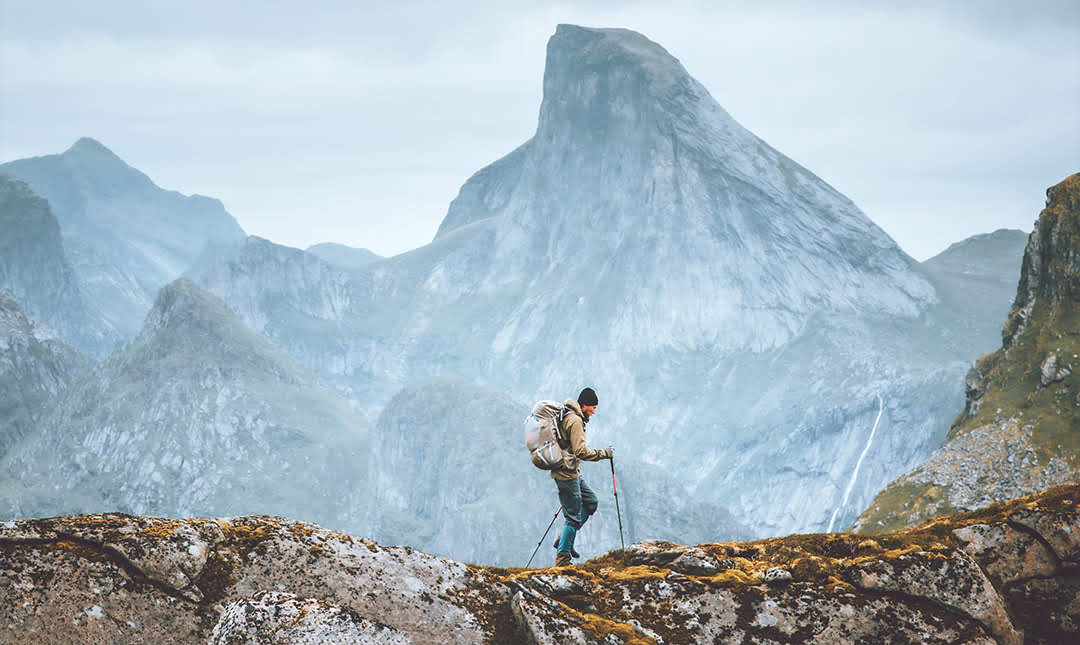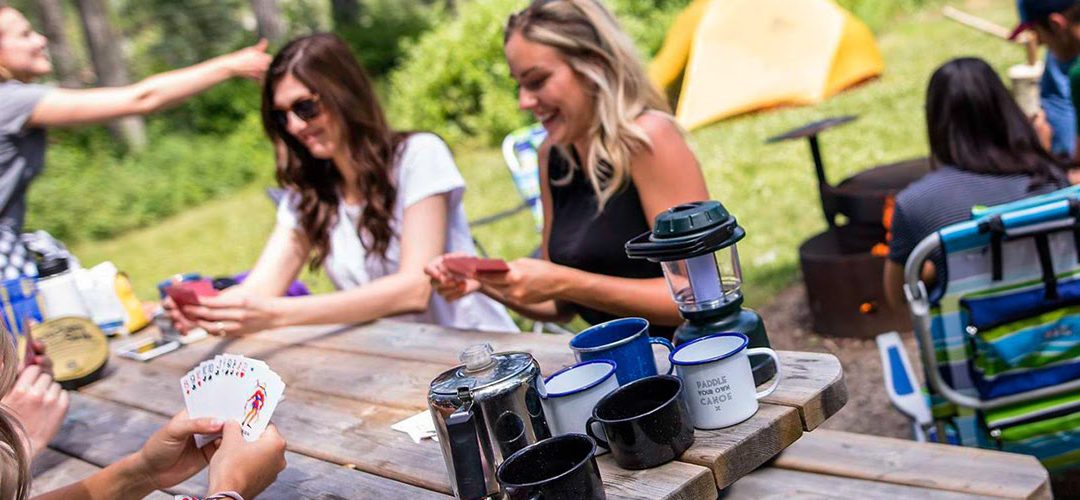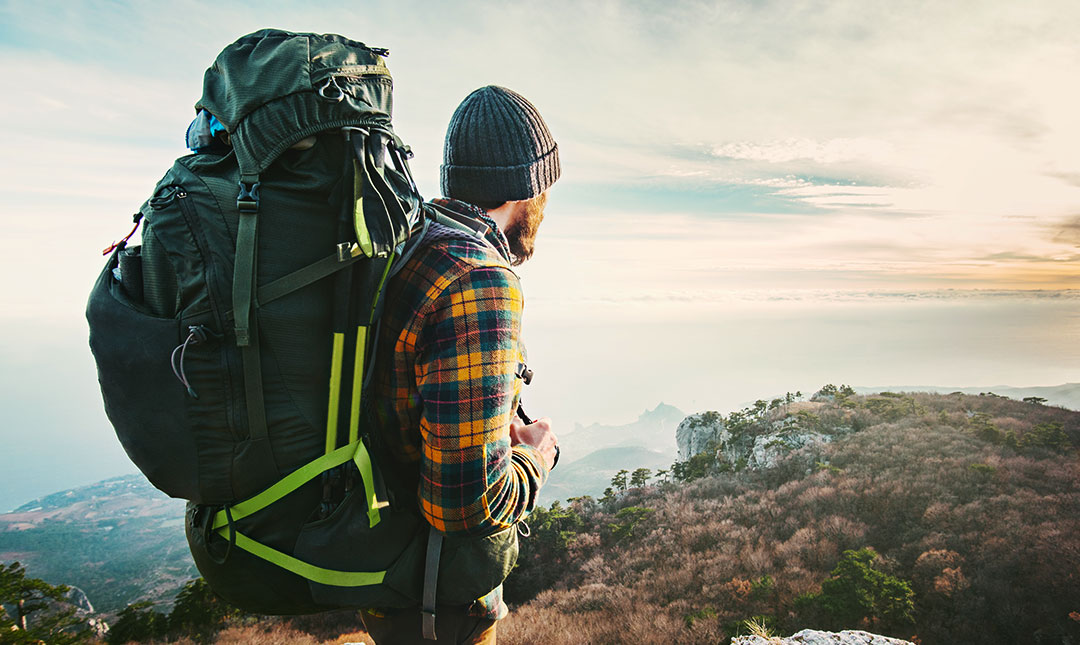Ah, the great outdoors — a world of endless potential. Every year, we help thousands campers book campsites online, flock to campgrounds across the nation to find recreation, relaxation, and sometimes… rain.
Unfortunately, inclement weather is a strong possibility in most of Canada’s gorgeous campgrounds, no matter where you go or what time of year you visit. Fortunately, though, a little rain doesn’t have to put a damper on your entire outing. With the right wet weather gear, you’ll be able to protect your sensitive items and shrug off all but the strongest storms.
Of course, choosing the right camping gear for wet conditions isn’t always easy. There’s no shortage of products being marketed to would-be campers as essential items, and trying to sort through them all unassisted can create major decision fatigue.
Picking out the correct products is just part of the work, too — you’ll also have to know how to set up your camp to make the most of them. That’s why we’ve come up with this list of wet weather camping items every intrepid explorer should take along when they venture into the wilderness.
What Do You Need for Wet Weather Camping?
There are three important categories you’ll want to consider when shopping for rain-ready camping gear:
- Firstly, you’ll want to think about items that offer general protection for you and your goods.
- Secondly, you’ll want to think about the clothing you and the others in your party wear to keep yourselves warm and dry.
- Finally, make sure to consider specialty pieces of gear that will allow you to perform specific tasks (like eating and sleeping) without discomfort.
General-Purpose All-Weather Camping Gear
- Your tent. If you plan on camping in rainy weather, you should know that there are such things as waterproof tents. They normally come with a waterproof rating (measured in millimetres) that ranges from 1000-10,000mm (anything below 1000mm is not considered a waterproof tent). However, don’t expect waterproof tents to repel rain forever. Most of them simply have a water-repellant coating, which will eventually come off and must be refreshed with the use of a tent-reproofing spray.
- Your tarps. Hanging a tarp so that it is suspended flat in the air above your tent is an excellent way to add a layer of protection between it and falling rain. However, not just any piece of cloth will do when it comes to keeping away the rain. We recommend using a tarp made from Tyvek, which is traditionally wrapped around new houses to waterproof them. New Tyvek tarps can be stiff though, so throwing yours in the washing machine once or twice before you pack it will also make it easier to fold and store for the trip.
- Your bags. All kinds of waterproof backpacks are available, but they tend to be fairly expensive. If you don’t want to break the bank, consider using trash compactor bags to hold items you want to keep dry. Make sure to avoid regular garbage bags though, since they’re not as durable as trash compactor bags and can tear easily, letting in water and defeating the entire purpose.
- Duct tape. Not only can duct tape be an excellent tool for temporarily sealing cracks, but it can serve as kindling too! If you’re having trouble starting a fire during a drizzle, try burning small strips of duct tape instead of twigs to get the fire going. Just don’t burn it in large quantities or inhale the fumes.
- Water-repellant sprays. We’ve mentioned tent-reproofing sprays already, but some sprays claim to have other capabilities as well. A few manufacturers state that their sprays can also block UV rays, which could help protect the skin of users camping on sunnier days.
Outdoor-Appropriate Clothing
- Appropriate base layers. Lots of novice campers ignore layering because they feel that it’s too much of an effort to put on all that clothing. However, taking the time to layer up will make you much more comfortable in a broad range of conditions — including wet ones. Merino wool and high-quality synthetic garments are both strong choices, but they offer different advantages. Merino wool feels comfortable on the skin, has natural anti-microbial properties that prevent odour, and can absorb up to 30% of its weight in water before it actually feels wet. Synthetics, on the other hand, will often wick moisture, use the wearer’s body heat to help them dry, and may offer protection from UVA and/or UVB rays. You may also be able to find base layers that blend merino wool and synthetic fabrics.
- A good-quality raincoat. Once you’ve chosen a base layer, make sure to cover it with a good raincoat. Take care to note the difference between a jacket that is actually waterproof and one that is merely water-resistant. A windbreaker might help you keep off a few droplets, but it will probably become saturated in a heavy downpour and leave you soaked. Try looking for jackets made from waterproof material that is still breathable enough to facilitate comfortable movement (such as GORE-TEX).
- Waterproof hiking boots. When choosing footwear for rainy conditions, the most important thing to remember is to make function a priority over fashion. It might be tempting to purchase “hiking” boots made from stylish suede or nubuck, but these materials offer dubious durability and will more than likely be ruined by rain. If you must have leather footwear, opt for full-grain instead. For wet weather camping though, we recommend eschewing leather entirely and choosing boots made from synthetics like polyester, nylon, and polyurethane.
Specialty Items
- Sleeping bags. Nobody really likes to sleep wet, but sometimes you don’t have a choice. Your best bet when choosing sleeping bags for wet weather is to avoid down and look for synthetic insulation — which dries out faster than down, even when it has been treated.
- Hot plates. If you can’t start a fire and don’t want to use duct tape, consider portable cooking appliances. Waterproof hot plates do exist, but you can also set up a propane stove with a windscreen if the rain isn’t coming down directly in large quantities.
- Waterproof electronics. For those of you who can’t read an analogue compass or didn’t think to pack laminated maps of the area, you’ll want to make sure your smartphones, GPS units, and other devices are protected with waterproof covers.
Setting Up Camp
You’ll be tempted to pitch your tent first when you reach your campsite, but if rain is on the way it’s a better idea to rig up the tarp first. Tie each corner of the tarp to a nearby tree (or a stake if you have one) and raise it off the ground until it hangs flat over the area where you’re planning to sleep. Once you do, you’ll be able to stay dry while putting up the tent (and you’ll have a dry spot you can always come back to between other tasks).
If you brought a hot plate or gas stove, you might be tempted to use it inside the tent so that food doesn’t get wet — but please, for the love of all that is good in this world, don’t do that. Cooking in an enclosed space made of fabric is literally a recipe for disaster, so make sure to do it in the open air. If there’s no more room under the tarp, look for an area with natural cover from trees and rocks.
Stay Wet-Weather Ready
Predicting the weather isn’t an exact science, and there’s always a chance that you could find yourself caught in a cloudburst during your next camping trip. Just remember: carrying the right gear and knowing how to use it can help you come through even the wettest conditions without sacrificing your comfort. Prepare yourself properly, and even a total deluge won’t be able to spoil your fun. In the end, life isn’t about waiting for the storm to pass — it’s about learning how to camp in the rain.





Recent Comments